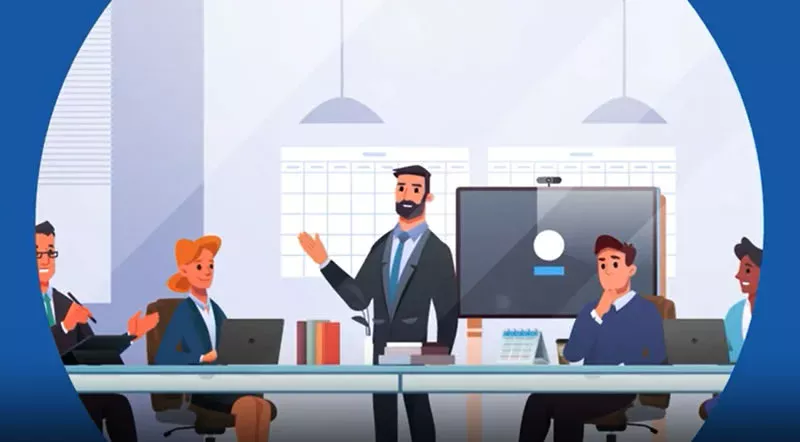Rural Broadband and FCC Expansion Explained
Many Americans do not live in cosmopolitan areas of the United States of America. Instead, they live in rural areas of the country. There are many reasons for this, one of which could be lifestyle preferences. Perhaps, the reason is due to the level at which an individual is financially stable. For instance, living and working in a rural area is much cheaper and more affordable. Therefore, moving to a cosmopolitan area would cause the individual to become financially unstable. Whatever the reason, many Americans choose to work and live in rural areas of the country. However, the disadvantage of this decision is that these people lack certain resources. More specifically, rural Americans lack access to digital communication and connection. As a result, these Americans are left behind when it comes to certain services that are provided digitally. Luckily, the FCC has decided to give $244 million dollars to help jumpstart digital services to rural areas of the United States of America. In 2020 the world was hit with the global pandemic COVID-19, where it became more important than ever for rural communities to have access to television, wire, radio, cable, or satellite for entertainment, work, and the latest news.
Background:
The Federal Communications Commission (FCC) controls digital communication, whether that be via television, wire, radio, cable, or satellite. This service is incredibly vital to sustain virtual communication and broadcasting throughout the United States of America. Currently, the FCC has decided to authorize over $240 million in order to expand rural broadband. What this means is that the company hopes to increase digital connection services in the rural parts of the United States of America. As of February 13th, 2020, the FCC officially authorized this ten-year plan, specifically for Arkansas, Illinois, Indiana, Kansas, Missouri, Massachusetts, Oklahoma, Wyoming, and New York. Furthermore, this budget would allow for 100,000 new rural homes and businesses to have the comfort of digital communication and connection (Wiquist, 2020).
The Result and Benefits of this Plan:
What this new plan means to the individuals living in rural parts of the United States, is that they would have better access to employment, healthcare, resources, and education. In other words, this new project will help close the digital divide. The digital divide is what is keeping individuals who live in the rural areas of the United States from keeping up with today’s fast paced digitally dependent society. Consequently, these individuals are unable to compete in society’s’ digitally dependent society for three reasons (Wiquist, 2020).
First, today’s job market has expanded to include numerous remote job opportunities as well as a need to work from home due to COVID-19. Therefore, without an appropriate digital connection, rural Americans are missing out on the new and broad job market. This digitized job market would give numerous rural Americans the chance to advance in their career without relocating. However, the digital divide is what is hindering this opportunity from reaching these Americans. Consequently, this new plan is what will help improve the job prospects in the rural areas of the United States of America.
Second, individuals are also not given the same educational opportunity as those who are digitally savvy. More and more universities are setting up distance learning / online courses, which would greatly benefit those that are unable to relocate and yet still want to achieve a degree in higher education. Furthermore, a higher education would mean that that individual would be able to get a higher paying and/or better job. A lack of this digital resource is what is keeping rural Americans from achieving more. Thus, the cause for a digital divide in the United States. As a result, it is crucial that this plan works seamlessly in order to help rural Americans obtain their right to higher education.
Third, the digital divide has hindered rural Americans from gaining access to remote healthcare services. As mentioned above, not only is the job market digitizing but so is the healthcare system. More and more Americans hope to call in or chat online with a healthcare specialist rather than commuting to a hospital or private practice. Due to the COVID-19 global pandemic, it has become even more essential everyone has access to the latest news, resources, and access to healthcare. Virtual online medical visits have become the new normal. Rural residents without access to fast internet can be put at risk having to meet face to face. Therefore, it only makes sense that all Americans benefit from this developing service, not just those that live in the cosmopolitan regions of the United States of America.
Consequently, the digital divide has hindered rural American from receiving certain crucial services and opportunities such as the remote job market, online education, and digitized healthcare system. As a result, this new plan that the FCC has established will potentially eradicate the digital divide, allowing Americans across the country, from Arkansas to Wyoming, to have access to the benefits that broadband services provide.
Specs:
In total, this plan has provided $240,232,453 worth of support per year for the next ten years. This support is widespread to a total of 107,669 different locations from Arkansas to Wyoming. The following states are receiving support for the company called Wisper ISP, Inc: Arkansas, Illinois, Indiana, Missouri, Oklahoma, and Kansas. The other states are receiving support for different companies. Massachusetts, is getting support for the Westfield Gas and Electric Light Department. New York is getting support for Hughes Network Systems, LLC. Finally, Wyoming is getting support for Mountain West Technologies. Each state is obtaining different levels of speed, from 25/3 Mbps to 1Gbps/500. Most states are obtaining 100/20 Mbps. Each state also has a different budget of support for the span of ten years. Indiana has the lowest support over the span of ten years with $123,648, and Missouri has the highest budget of $176,319,409 worth of support. The reason for the difference in budget per state is a result of the number of locations that are being catered to within each state. For instance, Indiana’s budget is low because it is only catering to fourteen locations. However, Missouri’s budget is much higher because it is looking over 68,269 different locations. As you can see, the overall budget plan is fair and consistent (Wiquist, 2020).
Conclusion:
The fact that the FCC has decided to authorize this new plan to potentially eradicate the digital divide in the United States of America is refreshing. Americans should not be limited in regard to resources just because of their location. All Americans deserve to have equal opportunities for jobs, education, and healthcare, which is what this project is trying to achieve.
References
Wiquist, W. (2020). FCC AUTHORIZES OVER $240 MILLION FOR RURAL BROADBAND. Retrieved March 24, 2020, from https://docs.fcc.gov/public/attachments/DOC-362463A1.pdf
DOCSIS 4.0: Ushering in the Next Generation of Cable Internet
What is Wi-Fi 7? The New, Faster Standard
Trends in Set-Top Box Deployments
How Network NoiseHawkAI Is Changing Network Monitoring
Deciding if Automated Testing is Right for Your Application
Using AI Technology to Automate Pinpointing Upstream Noise
Pandemic-Related Component Shortages and the Impact Across the Broadband Industry
What is Wi-Fi 6 and Why is It Important?
What is CPE and Why Does It Matter?
Rural Broadband and FCC Expansion Explained
The Challenges of Monitoring Upstream Noise in a Remote PHY Environment
Why Promptlink Automated STB Solution is Right for You
What is broadband network noise and why is it difficult to find?
How Do You Measure Network Health and Performance









